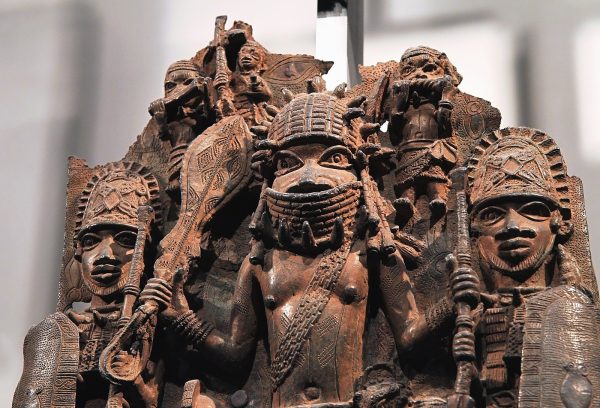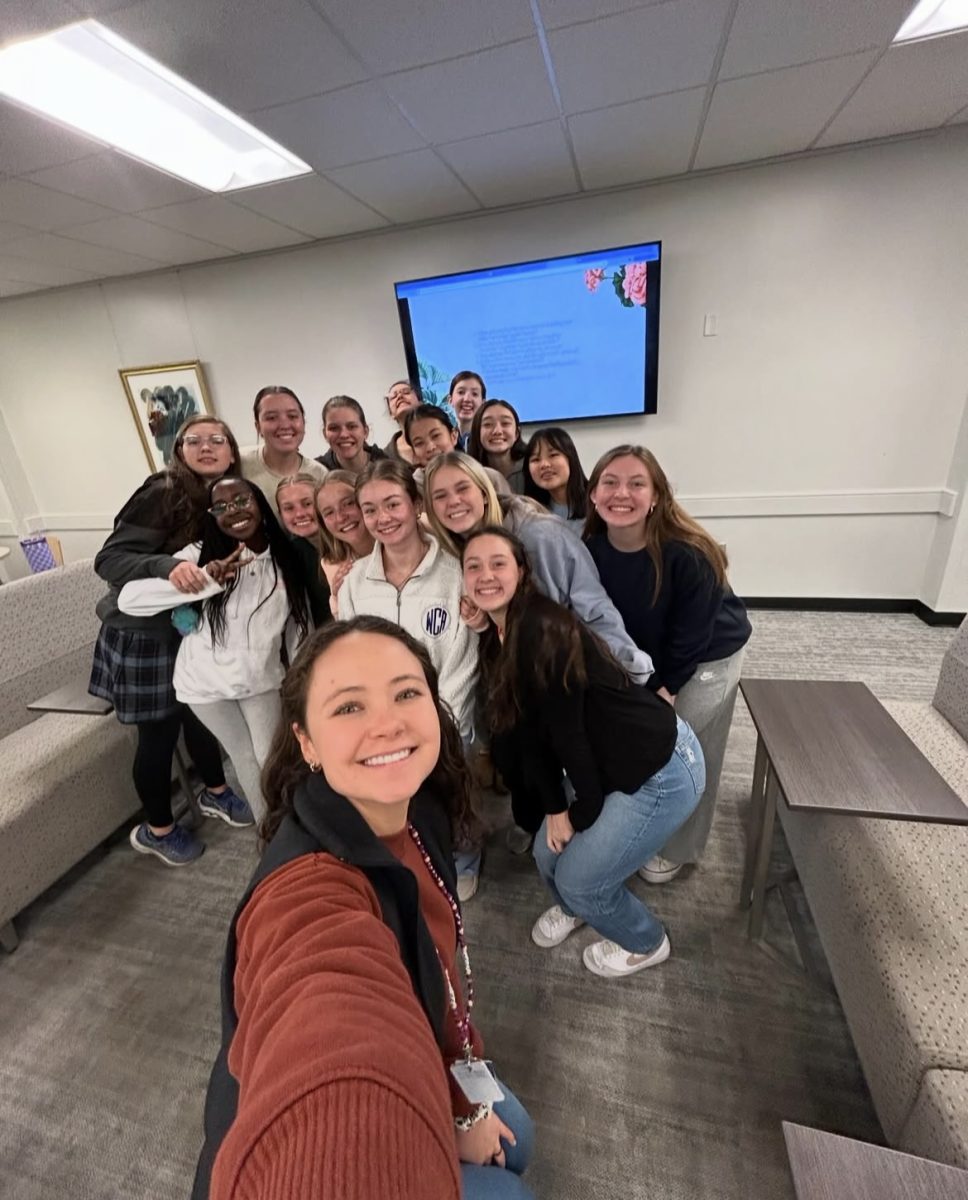The Acropolis and the Notre-Dame de Paris are considered architectural masterpieces that display the excellence of Western artists. Not only that but they are a testament to the innovative societies that built them. However, have you ever heard of the Great Mosque of Djenne? Or even Great Zimbabwe? Both are architectural masterpieces the same as any European complex or cathedral, they were just built in Africa. In the mind of many Westerners the African continent was behind in innovation and progress compared to their European counterparts. To the contrary you will find that Africa was home to many highly organized and prosperous kingdoms and tribes.
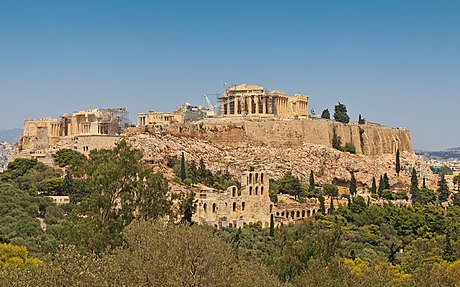
The Acropolis of Athens is an excellent example of Greek architecture that is still in existence today. Upon this rocky hill sits the Parthenon, Old Temple of Athena, and many other great structures rest upon this icon of western culture. The World Heritage Convention deems the Acropolis “a unique complex, which heralded the emergence of classical Greek thought and art.” This glorified rock is where Democracy, many freedoms, and the art of theater were born and fostered. For hundreds of years this singular spot was the epicenter of classical Greek values and culture. The philosophies born here influenced the Renaissance and Humanist values of later European scholars. But what is considered the crown jewel of this hill is the iconic Parthenon. Rows of marble columns border a structure in ruins that has withstood a millennia of religious and cultural change. Beginning as a polytheistic monument to the Greek Pantheon of gods, and later becoming a monotheistic Christian church during the Late Antiquity. This structure has lived through numerous changes in its use and beliefs it has hosted. According to SmartHistory, a resource for Art History, the story of this sight is “one of adaptation, transformation, and even destruction.”
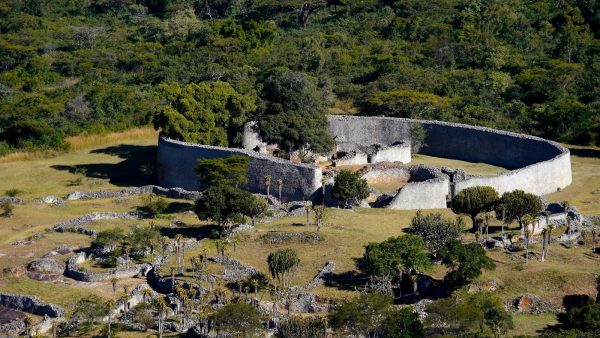
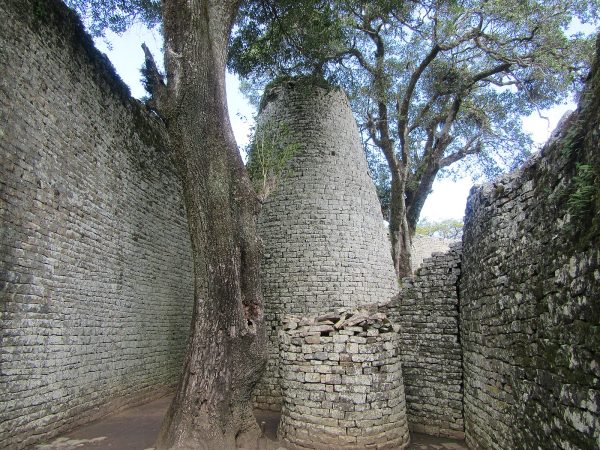
However when turning our eyes southward to the African continent we find a centerpiece of Ancient African progress and wealth, the ruins of Great Zimbabwe. The city is divided into three groups: the Hill Ruins (the royal city), Great Enclosure (community area), and Valley Ruins (commercial hub). The World Heritage Convention says that the site “was an important trading center and was renowned from the Middle Ages onwards.” Not only that but the reach the Shona people who inhabited this place had is astounding. These people went from a purely agricultural society and shifted to an emphasis on mining and trade. According to SmartHistory they have found “iron tools […] copper, and gold wire jewelry ornaments […] porcelain fragments originating from China.” The inhabitants of Great Zimbabwe had an influence stretching far beyond their borders. They reached as far as China with their trade of precious metals, especially gold from the rich ore deposits just 25 miles from the city. Not only that but the government of this city was similar to that of European kings and queens and was oftentimes more benevolent. Featured above is a picture of a “conical tower” a symbol of a Shona King’s generosity and love for his people. The towers functioned as granaries and the Shona ruler would distribute grain as a symbol of his protection over his people. In no way were these people uncivilized or backwater, they had advanced societal structure and trade routes that created a flourishing economy. It was not until a disease plagued the cattle of their lands that the city was thought to be abandoned.
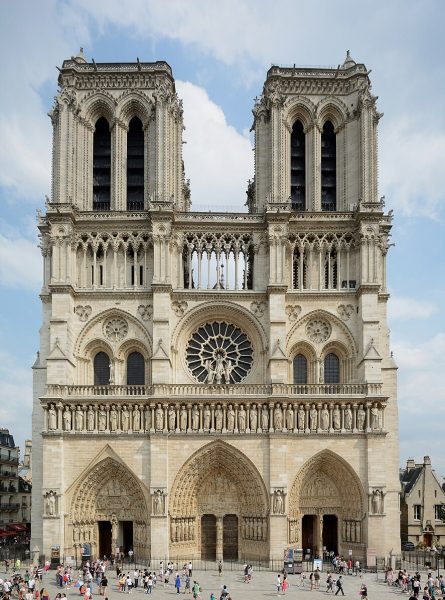
The Notre-Dame de Paris is one of the most famous Gothic cathedrals from the Middle Ages. It was consecrated in 1189 CE and the church was completed over the next several hundred years. It boasts two massive early Gothic towers, flying buttresses, and large rose windows. Not only that but this place of worship has survived major change and seen France change throughout the ages. Eventually however Notre-Dame fell into disrepair due to neglect. The cathedral was saved from imminent destruction by Napoleon Bonaparte following the French Revolution. Later the cathedral was thrown into pop culture by Victor Hugo’s “The Hunchback of Notre-Dame”. After this Notre-Dame gained its infamous reputation and cemented its place in modern culture. Eventually the movie adaptation of Hugo’s book made by Disney helped bring it into the 21st century. This symbol of Gothic architecture is the crown jewel of Northern European Catholics.
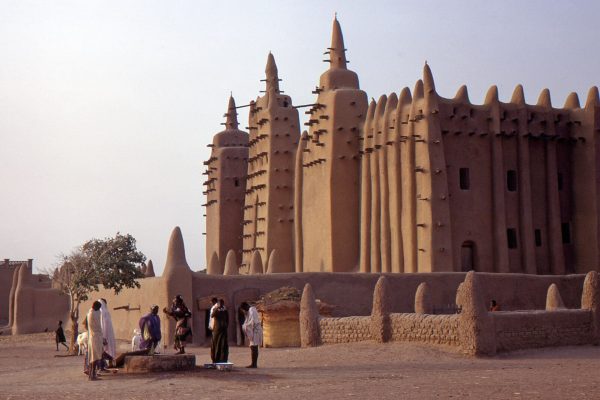
While most have heard of the Notre-Dame de Paris, many have most likely never heard of the Great Mosque of Djenne. Defined by SmartHistory as “one of the wonders of Africa” this mudbrick structure has been recreated several times throughout history. It has withstood the French colonization of the city and times where the Mosque fell into great disrepair. The Great Mosque is an adobe building meaning mudbrick. Mud buildings such as this require consistent upkeep and replastering. If the replastering does not occur the structures can melt during the rainy seasons. After a long time of neglect the Mosque had to be rebuilt in 1834 and again later in 1907 during the colonial occupation. The constant upkeep needed to maintain this mud structure is impressive and dwarfs any upkeep needed for a limestone cathedral like the Notre-Dame. Not only that but the unique shape and placement of the minarets create an image not easily forgotten.
I contrast these pieces to hopefully make clear your own bias towards Western Art. As I have clearly shown, there are masterpieces that rival their European counterparts. The European colonization of the African continent was an erasure of culture. One clear example was the British expedition that seized the Oba’s palace in Benin. They raided and looted the African riches and valuables. This was a violent act of British imperialism that killed many and bulldozed much of these people’s heritage. Items of large significance that were stolen are the “Benin Bronzes”, bronze cast images that were very important to the Benin people. These bronze plaques are currently on display at the British Museum, even though there have been calls to return them back to Nigeria. African Art has been discounted often in the minds of Westerners, in favor of Western marvels.
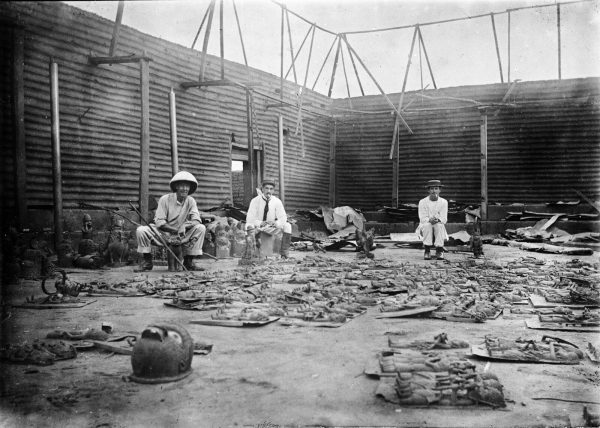
(Courtesy of Wikimedia Commons.)
